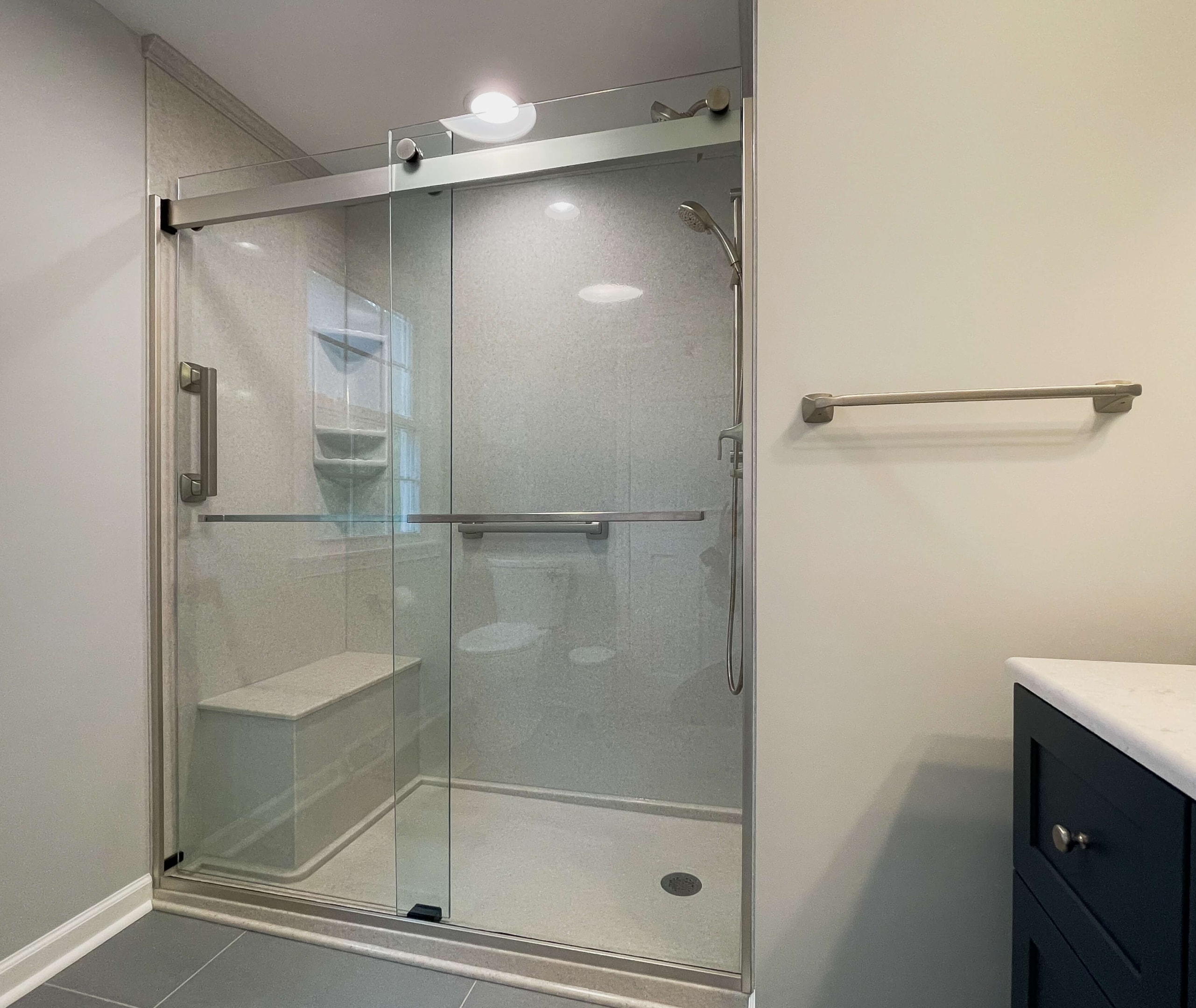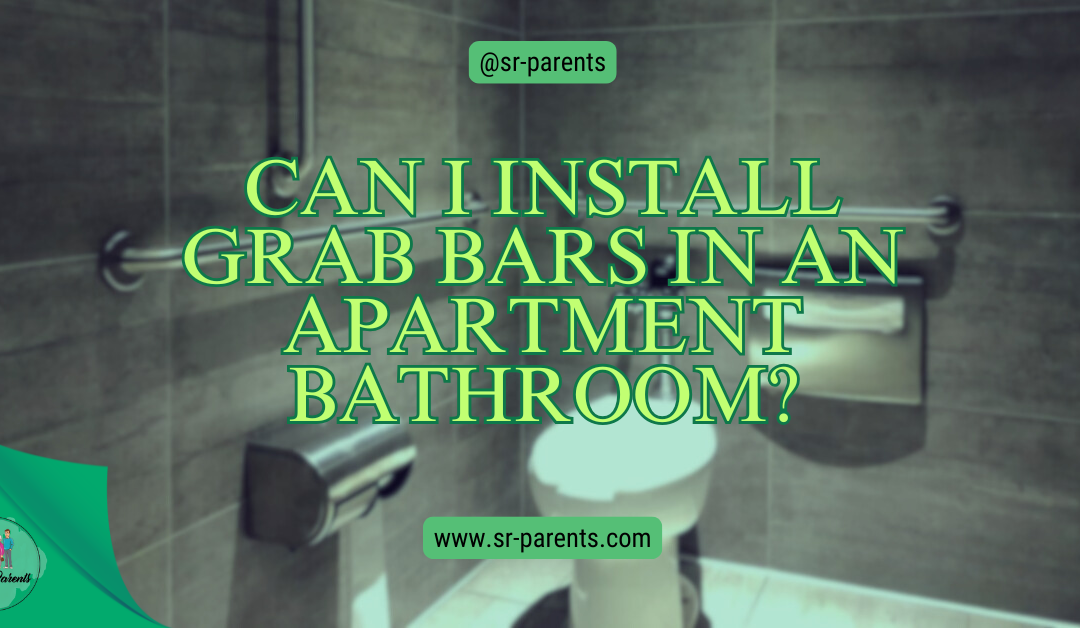Can I install grab bars in an apartment bathroom? Installing grab bars in an apartment bathroom can be a game-changer, offering increased safety and accessibility. This raises a few questions for renters: Can I install grab bars in an apartment bathroom? Are landlords generally open to modifications like these? Will you need special permission, and are there ways to add grab bars without permanently changing the bathroom walls? Knowing your options can help you create a more secure bathroom space without risking your lease or causing any damage.
This guide will walk you through everything you need about adding grab bars to rental properties. From understanding your rights as a tenant to exploring non-permanent installation methods, you’ll discover how easy it can be to enhance bathroom safety even in a rental. Whether you want stability for yourself or a loved one, you’ll find practical, landlord-friendly solutions that make a big difference.
Contents
Can I Install Grab Bars in an Apartment Bathroom? Understanding Regulations and Methods

Installing grab bars in an apartment bathroom can enhance safety and accessibility, especially for individuals with mobility issues or those who simply want added stability. Whether living in a rental unit or owning an apartment, adding these fixtures requires careful planning and considering both practical and legal aspects.
One must assess the need for grab bars, determining their ideal placement for maximum efficacy while considering the apartment’s structural integrity to ensure safe installation. Legal considerations are also crucial when installing grab bars in an apartment. Renters may need to obtain permission from landlords or property managers, and in some cases, there might be specific regulations or provisions in lease agreements that address modifications for accessibility.
The selection process involves choosing grab bars that are functional and robust and in harmony with the bathroom’s aesthetic. Once chosen, proper installation is paramount, and professional assistance may be required to ensure that the grab bars are securely attached, minimizing the risk of damage to the property and ensuring user safety.
Key Takeaways
- Assessing functionality needs and compliance with legal requirements is essential before installation.
- Careful selection and professional installation of grab bars ensure safety and property integrity.
- Ongoing maintenance and regular inspection of installed grab bars guarantee their reliability over time.
Assessing the Need for Grab Bars
When asking, “Can I install grab bars in an apartment bathroom?” one must evaluate the personal necessity for support and stability and the existing bathroom configuration.
Determining Mobility Requirements
Individuals should assess their mobility levels or that of their household members, focusing particularly on strength, balance, and physical capabilities. For someone with disabilities, injuries, or age-related challenges, grab bars may offer essential support. It is vital to determine where additional stability is needed in the bathroom, such as near the toilet or in the shower area.
- Entry and Exit Support: Consider whether assistance is required when entering or exiting the shower or bathtub.
- Toilet Assistance: Assess the ease of lowering to and rising from the toilet position.
- Shower and Bath Safety: Evaluate the need for support while standing or moving in the shower or tub.
Evaluating Bathroom Layout
The bathroom’s physical layout dictates the placement and type of grab bars that can be installed. Important factors include:
- Wall Stud Locations: The presence of studs for secure mounting.
- Space Constraints: Adequate space for bar installation without hindering bathroom usability.
- Mounting Surfaces: Suitability of walls for grab bar installation in terms of material and stability.
Bearing in mind these considerations ensures the grab bars will provide the anticipated benefits without disrupting the functionality of the bathroom space.
Legal Considerations

When considering the installation of grab bars in an apartment bathroom, tenants often wonder, Can I install grab bars in an apartment bathroom? Navigating the relevant laws and lease terms is essential, as this understanding ensures compliance and protects their rights.
Understanding Tenant Rights
Tenants have specific rights regarding modifications to their living space, particularly concerning personal safety and accessibility. Under the Fair Housing Act, individuals with disabilities can request reasonable modifications like grab bars. Landlords are generally required to allow these changes, although financial responsibilities vary.
Reviewing Lease Agreements
Lease agreements may contain specific clauses related to renovations or alterations. Tenants must review their lease carefully to determine the protocol for requesting modifications such as grab bars. They should look for terms regarding permission, alteration responsibilities, and restoration requirements upon moving out.
Communicating with Landlords
Effective communication with landlords is crucial. Tenants should formalize their request through a written application and engage in a dialogue regarding the installation process. While tenants can often install grab bars as a reasonable modification, understanding each party’s obligations helps prevent misunderstandings or legal disputes.
Can I Install Grab Bars in an Apartment Bathroom: Selection of Grab Bars
Selecting the right grab bars for an apartment bathroom involves considering various types, evaluating materials for durability, and ensuring that the chosen design complements the bathroom’s aesthetics.
Types of Grab Bars
Grab bars come in different configurations to suit various needs and bathroom layouts. Typically, one encounters straight grab bars, which offer a simple and efficient design for support. L-shaped grab bars are beneficial for enhanced stability around shower and tub areas.
Some individuals might opt for swing-away or flip-up bars, providing flexibility and space conservation. Specific installation sites such as showers or bathtubs may require specialized forms, like vertical or angled bars, to facilitate safer entering and exiting.
Materials and Durability
When selecting grab bars, durability is paramount, and the material mainly dictates this. Stainless steel is a common choice due to its high strength and corrosion resistance. Other materials include aluminum and plastic, which are lightweight and may offer different finishes but vary in sturdiness and long-term reliability. It is important to select bars that can withstand consistent use and meet the necessary weight capacity standards, typically around 250 pounds or more.
Aesthetics and Design
The look of grab bars plays a significant role in the overall design of a bathroom. Manufacturers now offer a range of styles and finishes, from bright chrome to brushed nickel and even oil-rubbed bronze.
The aesthetics should match the bathroom’s theme and promote visibility for ease of use. For a more seamless appearance, some grab bars integrate into other bathroom fixtures like towel racks or may be disguised as part of the overall decor.
Did You Know?
Building codes vary by location, but generally, specific regulations dictate the installation of grab bars in handicapped-accessible bathrooms. These codes ensure safety and accessibility for individuals with disabilities.
Installation Process

Installing grab bars in an apartment bathroom can significantly increase safety and accessibility. Many renters ask, Can I install grab bars in an apartment bathroom? The process varies depending on whether the installer chooses a do-it-yourself approach or hires a professional. Regardless of the method, proper tools and safety precautions are fundamental to a successful installation.
DIY Vs. Professional Installation
Installing grab bars can be a manageable task for individuals who are comfortable with basic tools and DIY projects. Instructional guides like The Family Handyman’s tutorial on installing bathroom grab bars offer step-by-step assistance. However, hiring a professional is advisable for those unsure of their ability to securely mount grab bars or unfamiliar with plumbing and wall structures. Professionals ensure compliance with local building codes and secure installation.
Tool and Material Checklist
When preparing to install grab bars, one should assemble the following items:
- Measuring Tape: For precise measurements.
- Stud Finder: To locate wall studs for a secure fit.
- Level: Ensures the grab bars are installed straight.
- Drill: With the appropriate drill bits for tile or drywall.
- Screws: Usually provided with the grab bar, designed for bathroom fixtures.
- Masking or Painter’s Tape: Useful for marking drill spots on tiles as noted on Lowe’s guide to grab bar installation.
Safety Precautions
Safety should never be compromised during installation. Wear safety goggles to protect your eyes from debris. Confirm that the chosen location avoids plumbing pipes by consulting building plans or using an electronic stud finder with pipe detection. Never guess the location of studs or pipes.
Always double-check measurements before drilling into walls. Using a diamond-tipped drill bit to prevent tile damage if drilling through tile. Ensure the grab bar is rated for the weight to support and secured into studs, not just drywall.
Structural Integrity and Placement
When considering the question, Can I install grab bars in an apartment bathroom? It’s crucial to ensure they are securely anchored. This requires a thorough understanding of the wall structure, including the studs’ location and the precise placement of the bars for effective use.
Locating Wall Studs
Grab bars need to be attached to wall studs for stability. To properly locate wall studs in an apartment bathroom, one can use electronic stud finders or magnetic tools that detect the nails or screws holding the drywall to the studs.
Studs are typically spaced 16 inches apart in the center, but measuring this from a corner of the room can confirm the stud locations. For instance, the Experts at Storables emphasize the importance of using a level to ensure the bars are installed correctly once the studs are located.
Calculating Optimal Placement
The optimal grab bars placement should be tailored to the user’s needs while following established guidelines. For a bathtub, a grab bar that is 24 inches long should be installed on the control end wall at the front edge of the bathtub.
Two additional grab bars are recommended on the back wall, one in line with standard ADA height regulations and the other 8 to 10 inches above the bathtub’s rim according to ADA Installation Guidelines. Positions should allow for easy reach and support while moving from a standing to a seated position and back.
Maintenance and Upkeep

Installing grab bars in an apartment bathroom enhances safety and requires regular maintenance to remain secure and clean. Proper upkeep involves periodic inspections and adhering to specific cleaning protocols.
Routine Inspection
- Frequency: Grab bars should be inspected for stability every six months.
- Checkpoints: Ensure mounting hardware is tight and not corroded, and look for any signs of wear or damage on the bar itself.
- Action: If any part of the grab bar is loose or damaged, it must be addressed immediately to prevent accidents.
Cleaning and Care
Use non-abrasive cleaners and a soft cloth to preserve the finish of the grab bars. Wipe down the bars with a damp cloth and don’t forget to apply the cleaner as per manufacturer’s instructions. Rinse thoroughly to prevent residue buildup.
Tips: Avoid harsh chemicals that can degrade the grab bar material or cause discoloration. Regular cleaning maintains the appearance and ensures that grip is not compromised.
Final Inspection and Testing

Final inspection and testing ensure that grab bars in an apartment bathroom are safe and reliable. This stage confirms the stability of the grab bars and that the installation meets safety standards.
Ensuring Stability
One must verify the grab bars are securely attached to the wall and can withstand the necessary force. They should not move or wobble when pressure is applied. A stability test involves applying a force of at least 250 pounds, replicating an individual’s potential weight and movement using the bars for support.
Verification of Proper Installation
The proper installation is confirmed by checking the following critical points:
- Correct bars placement at the ADA-recommended height of approximately 33 to 36 inches above the floor for horizontal bars.
- Sufficient anchoring into wall studs or with appropriate wall anchors for non-stud mountings.
- Use of rust-resistant and waterproof hardware for longevity and safety.
- Compliance with local building codes and regulations, which may vary by jurisdiction.
The installer must also review the manufacturer’s guidelines for specific product installation recommendations.
Here’s an additional video about selecting grab bars.
By: EquipMeOT
Enhancing Safety and Accessibility in Apartment Bathrooms with Grab Bars
In conclusion, “Can I install grab bars in an apartment bathroom?” is a matter of practicality, safety, and accessibility. Whether for yourself or a loved one, installing grab bars can provide much-needed support in a space where stability is essential. Understanding the regulations and considerations involved in these modifications can empower renters to create a safer environment without compromising their lease agreements.
With careful planning, clear communication with landlords, and the right installation techniques, it is possible to effectively enhance the safety of an apartment bathroom. By choosing the right type of grab bars and ensuring they are installed securely, you can significantly improve both functionality and peace of mind. Ultimately, making your bathroom a safer space can have lasting benefits, helping to prevent accidents and providing confidence for daily activities.
Frequently Asked Questions
This section addresses common questions and provides clear answers about installing grab bars in apartment bathrooms and the regulations that may impact this process.
Do Landlords Have an Obligation to Provide Grab Bars for Tenants?
Landlords may be required to provide grab bars as a reasonable accommodation under fair housing laws if requested by a disabled tenant. They should check local laws to determine their specific obligations.
What is the Typical Cost Associated With the Installation of Bathroom Grab Bars?
The cost of installing bathroom grab bars can vary widely depending on the complexity of the installation and the type of bars used. Prices may range from a modest sum for basic models to more for advanced designs and professional installation services.
What Are the Ada Guidelines for Shower Grab Bar Placement and Specifications?
The ADA guidelines stipulate that horizontal grab bars must be mounted between 33 and 36 inches above the floor and be able to withstand a force of 250 pounds. Detailed placement and specifications can be found on trusted ADA grab bar requirements guidelines.
Stay Informed on the Latest in Senior Care
Embark on a journey of compassion and knowledge with us! Follow our social media channels for touching stories, expert advice, and essential tips for senior care.
? Website: Visit sr-parents.com for comprehensive articles and resources on senior health, wellness, and caregiving.
? Pinterest: Find endless caregiving ideas, home solutions, and senior-friendly activities at pinterest.com/seniorparents.
? Facebook: Join our supportive community at facebook.com/sr.parents. Connect with caregivers, share experiences, and find daily inspiration.
? Twitter: Follow twitter.com/senior_parents for timely updates, news, and trending discussions on senior care.
? Instagram: Explore instagram.com/seniorparents for inspiring stories, caregiving tips, and a closer look into the lives of seniors and their families.
Stay connected, uplifted, and well-informed with our latest articles and senior care stories.





